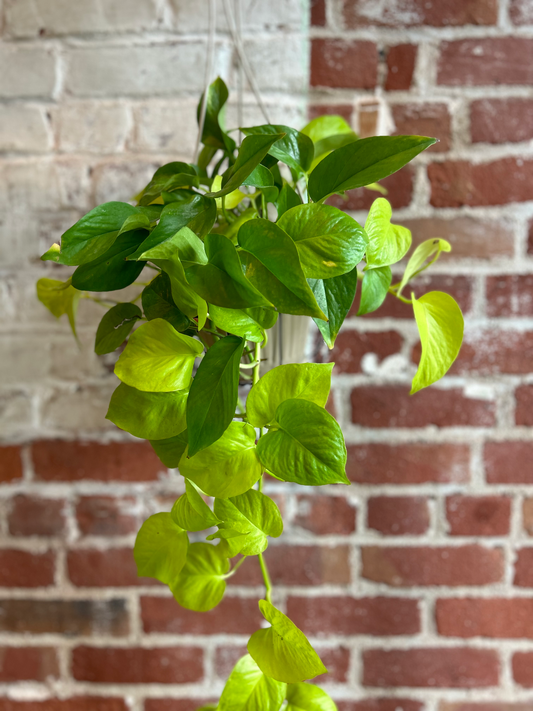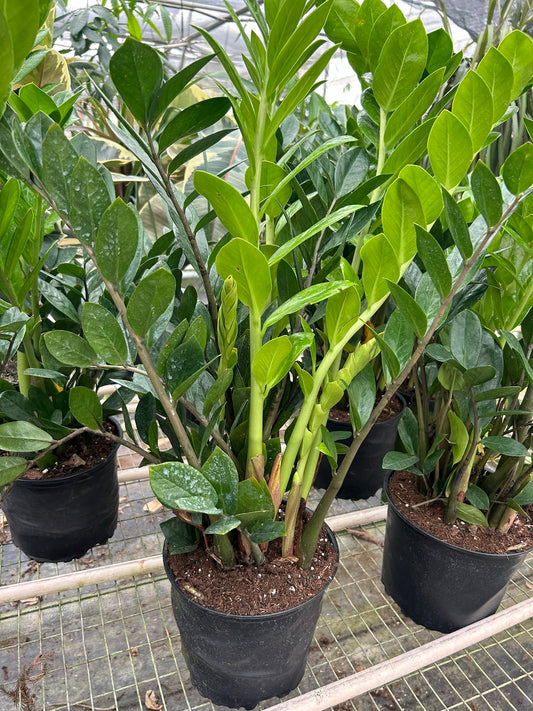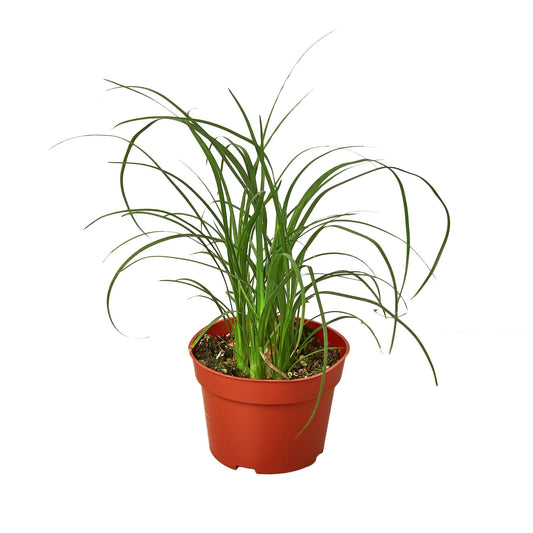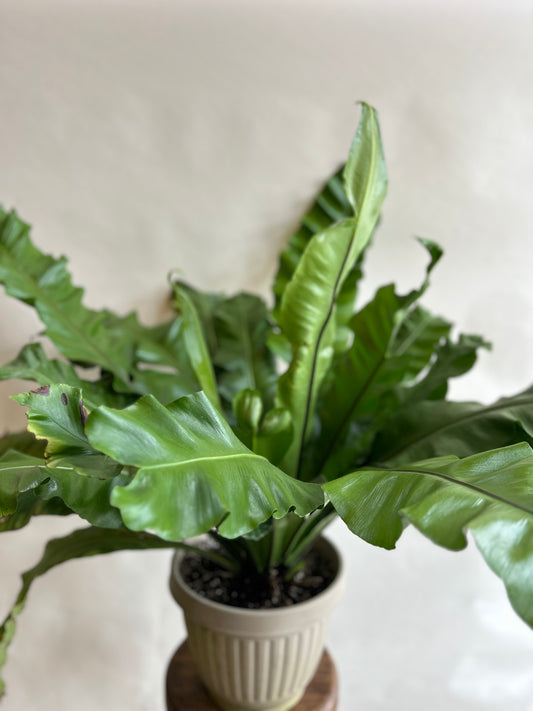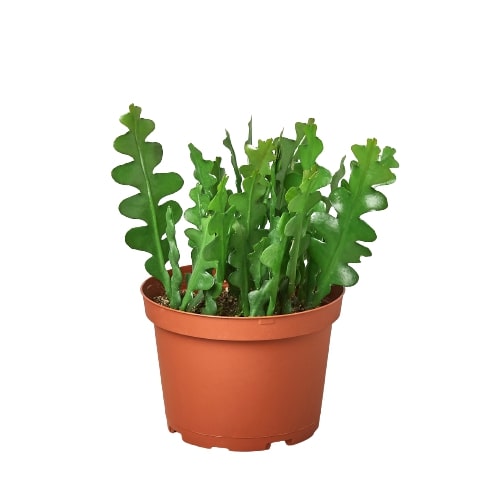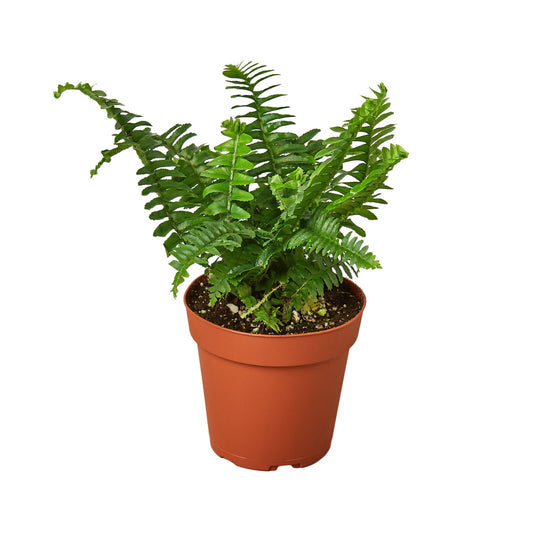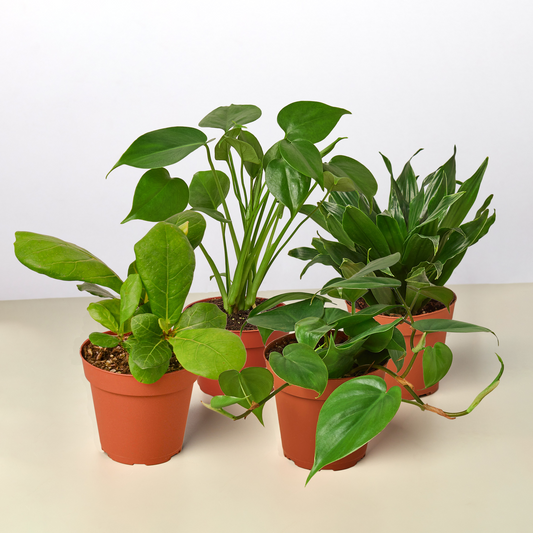Why Are My Gollum Jade's Leaves Turning Black?
Cafe Planta Team
Have you ever looked at your beloved Gollum Jade and wondered, “Why are my plant’s leaves turning black?” It’s a question that can set off alarm bells for any plant lover. Black leaves can be a sign that something is amiss, and it’s important to figure out what might be causing the issue.
In this post, we’ll dig into the possible reasons your Gollum Jade might be having this problem. From watering mishaps to lighting issues and pest invasions, we’ll cover it all. We’ll also share some tips on how to nurse your plant back to health and prevent future leaf troubles.
Understanding Your Gollum Jade
Before we get into the potential culprits behind those black leaves, let’s take a moment to appreciate what makes the Gollum Jade such a fascinating plant. Also known as Crassula ovata ‘Gollum’, this succulent has tubular, finger-like leaves that resemble the character from “The Lord of the Rings.” It’s a quirky, eye-catching plant that can add a touch of whimsy to any room.
The Gollum Jade is part of the jade plant family, a group of succulents that are popular for their low maintenance and striking appearance. Like its relatives, the Gollum Jade is drought-tolerant and thrives with minimal fuss. However, despite its hardy nature, it’s not invincible, and certain factors can lead to those dreaded black leaves.
Understanding your plant’s basic needs will help you pinpoint what might be going wrong. Gollum Jades require bright, indirect light, a well-draining soil mix, and a gentle watering routine. When these needs aren’t met, the plant can show signs of stress, including those pesky black spots.
Watering Woes
One of the most common reasons for black leaves in Gollum Jade plants is watering issues. While these succulents are relatively easy-going, they can be quite picky about their water. Both overwatering and underwatering can lead to problems, so let's break it down.
Overwatering: This is a frequent mistake with succulents. Gollum Jades, like other members of the succulent family, store water in their leaves and stems. When they receive too much water, the roots can become waterlogged, leading to root rot. This rot can spread to the leaves, causing black spots or even turning the entire leaf black.
- Ensure your pot has adequate drainage holes.
- Use a cactus or succulent soil mix to aid drainage.
- Let the soil dry out completely between waterings.
Underwatering: On the flip side, if your Gollum Jade isn’t getting enough water, it can also show signs of distress. While they are drought-tolerant, they still need occasional watering to stay healthy. Underwatered plants may develop dry, crispy leaves that can turn black at the tips.
- Check your plant's soil regularly to ensure it's not too dry.
- Water thoroughly, allowing excess water to drain away.
- Adjust your watering schedule based on the season; less in winter, more in spring and summer.
Lighting Challenges
Gollum Jades love their sunlight, but too much or too little can cause problems. Finding the right balance is crucial for their health.
Too Much Sun: While these plants enjoy bright light, direct sun can be too intense, especially during the hottest parts of the day. Excessive sunlight can cause sunburn, leading to black or brown spots on the leaves.
Too Little Sun: On the other hand, insufficient light can cause the plant to stretch toward the light source, a phenomenon known as etiolation. While this doesn’t directly cause black leaves, it can weaken the plant, making it more susceptible to other issues.
- Place your Gollum Jade in a spot where it receives bright, indirect light.
- If natural light is limited, consider using a grow light to supplement.
- Rotate your plant regularly to ensure even light exposure.
Temperature Fluctuations
Gollum Jades, like most succulents, prefer stable temperatures. They thrive in a range of 60-75°F (15-24°C). However, they can suffer from extreme temperature changes, which may lead to black leaves.
Cold Damage: Exposure to cold drafts or frost can cause blackened leaves. This is more of a risk if your plant is near a window in the winter or in an air-conditioned room.
Heat Stress: On the flip side, if your plant is near a heat source or in a very hot room, it can suffer from heat stress, which might also result in blackened leaves.
- Keep your plant away from drafty windows or doors.
- Ensure it's not too close to heating vents or radiators.
- Monitor room temperatures to maintain a stable environment.
Pest Problems
While Gollum Jades are generally resilient, they can occasionally fall prey to pests. Common invaders include mealybugs, spider mites, and aphids. These pests can attack the leaves, leading to black spots or patches.
Mealybugs: These pests leave a white, cottony residue and can cause leaves to turn black as they suck the plant’s sap.
Spider Mites: Tiny and hard to spot, these mites can cause leaf discoloration and black spots.
- Regularly inspect your plant for signs of pests.
- Use neem oil or insecticidal soap as treatment options.
- Isolate infested plants to prevent spreading to other houseplants.
Fungal and Bacterial Infections
Sometimes, black leaves can be a sign of fungal or bacterial infections. These are less common but can occur if your plant is in a humid environment or if water sits on the leaves for too long.
Fungal Infections: Black spots that spread could be a sign of a fungal infection like sooty mold. This often appears alongside pest infestations.
Bacterial Infections: These can cause black, mushy spots on the leaves, often accompanied by a foul smell.
- Increase air circulation around your plant by spacing it apart from others.
- Avoid overhead watering, which can encourage fungal growth.
- Consider a fungicide if you suspect a fungal infection.
Nutrient Imbalances
While succulents don’t need much in the way of fertilization, nutrient imbalances can sometimes affect their health, leading to black leaves.
Over-Fertilization: Too much fertilizer can lead to salt buildup in the soil, which can damage the roots and leaves.
Nutrient Deficiency: While less common, a lack of essential nutrients can also cause leaf discoloration and black spots.
- Use a diluted, balanced fertilizer during the growing season.
- Flush the soil periodically to remove excess salts.
- Avoid fertilizing in the dormant winter months.
Repotting Stress
Sometimes, repotting can stress out your Gollum Jade, leading to temporary leaf discoloration. If you’ve recently moved your plant to a new pot, it might just be adjusting to its new environment.
Root Disturbance: During repotting, roots can get damaged, which may affect leaf health.
Soil Change: A change in soil can also impact the plant, especially if the new mix retains more moisture than the old one.
- Repot only when necessary, typically every 2-3 years.
- Use a similar soil mix to what your plant is accustomed to.
- Handle the roots gently during the repotting process.
Reviving Your Gollum Jade
If you’ve identified the issue causing your Gollum Jade’s black leaves, it’s time to take action to nurse it back to health. Here are some general steps to get your plant on the road to recovery:
- Prune Damaged Leaves: Remove any leaves that are beyond saving to prevent further spread of damage.
- Adjust Care Routine: Make necessary changes to your watering, lighting, or fertilizing routine based on the issues identified.
- Monitor Progress: Keep an eye on your plant for signs of improvement or further issues.
- Be Patient: Recovery can take time, so be patient and consistent with your care.
Remember, even experienced plant parents encounter issues from time to time. The important thing is to learn from these challenges and make adjustments to keep your plants thriving.
Final Thoughts
Dealing with black leaves on your Gollum Jade can be a bit nerve-wracking, but understanding the possible causes can help you address the issue effectively. Whether it's adjusting your watering habits, tweaking the lighting, or tackling a pest problem, there are steps you can take to restore your plant's health.
At Cafe Planta, we’re passionate about helping you care for your plants. If you have any questions or need further guidance, feel free to email us or send a message on Instagram. We’re here to support you on your plant journey and help you build a thriving indoor garden.


